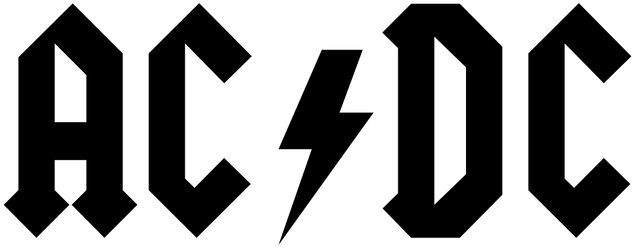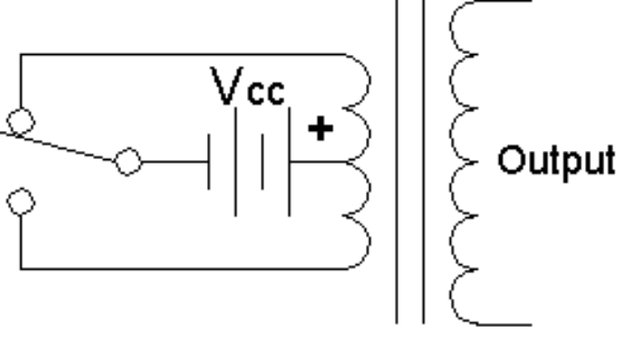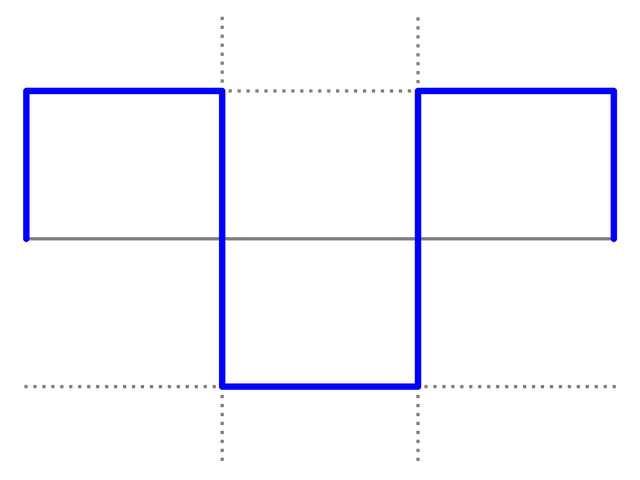An Insight into what brought about an inverter; how it works, its types and applications
Thomas Edison! One of the greatest American inventor (known for his inventions which has greatly influenced life around the world) once demonstrated that the best way through which electricity can be supplied, is through DC (Direct Current) compared to its counter part AC (Alternating Current).

Though after series of debates and devious means of convincing people how dangerous AC current could be, his arch-rival Nikola tesla, who was best known for his contributions (design of modern AC current supply system) won the day with the help of George Westinghouse and ever since then the world has run on AC power.
Why then was Edison's theory dismissed and Tesla's theory accepted? For those of you familiar with the two forms of electrical energy, conversion of DC current from lower voltage level to higher one has always being a difficult task to achieve unlike AC current which is capable of lowering or raising the voltage level as desired with the aid of transformers, in order to allow longer distance transmission with less cost and less maintenance.
In the 1880s, a high voltage DC system was also created by a swiss engineer René Thury using series motor-generator to transmit DC power over a long distance. Though the system was never adopted then due to its high cost and maintenance, the power loss associated with high voltage DC is relatively small compared to its equivalent AC line over an extremely long distance and also it provides an additional connection for different AC system (50Hz or 60Hz).
Looking at the last two paragraphs above carefully, you will notice that I was trying to bring out the good and the bad of both forms of electrical energy in relation to transmission because that was where the war between the two, all started. As you all know very well that the power ready available at our socket outlet is AC power which are used to power most of all our appliances except for the ones that works with DC power (as most of these exceptional device first convert the AC to DC power using a rectifier or a power pack).
How then were these two energies able to co-exist with one another within a system?
The advent of semiconductor electronics in the 1970s has made possible the transformation from one form of energy to another, causing the existence of both energies within a system.
On this post, I will be focusing on discussing how DC-AC (inverter) conversion process is achieved, its types and applications. From AC-DC (rectifier), this i have touched a little if you have gone through my previous post on SMPS, there I talked about basis of AC-DC conversion.
What is an inverter?

Unlike a rectifier, the operation of an inverter (one of the main component of solar power system) is entirely the opposite, what it does mainly is to convert the energy from a DC source (solar cell, batteries) to AC power. If asked, from my own point of view which among the two energies do i preferred the most, I will side with Sir Edison on DC as it can also be stored compared to AC which is used as it is generated. The stored energy can then be used by an inverter provide an AC output. Most of them (inverters) are designed in a way that the input DC voltage is normally lower (about 12V to 96V) compared to the AC voltage available at our socket outlet which can either be 120V at 60Hz or 230V at 50Hz. The power rating of inverter ranges from a few watts to ten thousand watts with ratings ranging from 10kW and above rarely used in households.
I am 99% very sure that anyone reading this post knows what an inverter is and what it does but just a few knows how it does its wonders. For those that don't understand how an inverter does it magic, let us consider this simple inverter circuit and those that do, this exercise should serves a reminder.

This circuit is designed in such a way that the battery Vcc is connected to the center tap of the transformer primary to allow current to flow through it and with a two-way mechanical switch connected to the two other windings, creating a return path for the current to flow back to the battery. Current will only return back through the winding that is connected to battery negative by the switch. Note that a transformer works alone with AC power, supplying DC energy to it is like plugging your mobile phone charger to a socket outlet and not connecting it to your mobile and expect it to charge your mobile phone, back to square one I say it.
But a rapid switching of the mechanical switch between the two windings will create two alternating paths through which the current can return back to the DC source and this in turn induces an AC power at the output. Supposing, the switching rate is as fast as lightning and the flipping of the switch back and forth is completed 50 or 60 times in a second (time = 0.02s or 0.0167s since T = 1/F), the alternation of the current direction produces a 50Hz or 60Hz AC (standard power line frequency) at the output (secondary) winding.
However, the operation of a standard inverter purchased from an electrical store is different from the above circuit explained.Do you know why?
The circuit produces a square-wave output which has a severe effect on sensitive appliances because the presence of higher frequencies and the peak voltage (usually lower compared to that of a sinewave).

It is just like saying you want to drive your new mecedez benz GLE 450 along a road full of pot holes and bumps (imagine the effect it will have on the vehicle within a week time). Due to this reasons, all square wave inverter are simply regarded as the worst of all types of inverter as they are only capable powering low-sensitive device (resistive in nature) like lighting and heating.
Another type of inverter based on the output waveform is the modified sinewave inverter (of course better than square wave but lesser to sine wave in terms of power quality so to say). It contains the addition of two or more square waves with 90% phase shift from one another. The resultant wave is closely compared to the shape of sine wave and is capable of powering any equipments, however its power/efficiency reduced by roughly 20% with some certain appliances (those with motors or electronic or digital timer).

Just as Mount Everest is the tallest mountain in the world, sine wave inverter is also the best of all inverter's output waveform as this exact waveform is the replica to that of a utility company. The main advantage of sine wave inverter over others is that all equipment and appliances are designed for a sine wave.

If ask, how many types of inverter do i know? Sincerely, my take is just one since they all performs one single task; convert DC to AC however, since there are different types of solar electric system, different type of inverter are designed to suit the taste of each system with additional features to spice it up. They includes; standalone, off-grid and hybrid inverter
Standalone inverter are some of the common inverters we see around us especially here in Nigeria because of the situation of how electricity is being handled here. It has nothing to do with the grid but take power directly from the sun or energy stored in the battery to provide electricity. Most of them always comes with a dual functionality; inverting and charging just in case when the sun isn't shine properly or at all, one can easily charge the battery with a gasoline generator.
When the solar system is linked with grid, the type of inverter used is known as a grid tied inverter. This inverter has no needs for a battery bank as the grid has replaced the role of the battery. How? Energy harness from the panel is directly converted to electricity and should in case there is excess power available, the inverter sends it to the utility company. It usually makes use of unique meter that measure the amount of power going in and out. Did I just say power going in? Yea, power is also supplied to the house whenever the inverter is not supplying power (this happen especially at night).
Hybrid inverter also known as a grid-tied inverter with battery backup combines the functions of the grid-tied and the standalone inverter together. This inverter also act as a charger taking up two sources; utility grid as primary siurce and gasoline generator, should in case the sun isn't doing its job.
Applications
Power grid: Special type of inverters like the grid-tied inverter and synchronverter have both found their usefulness in power grid. If you have been following, you all know what grid-tied inverter does while a synchronverter is a unique type of inverter used to stabilize the power grids by stimulating a rotary generator. They react faster in changing the grid frequency compared to normal generator.
Uninterrupted Power Supply: UPS as it so called, is a device that consists of an inverter and battery, designed with the intention of supplying back up energy should in case, the mains is not available.
Induction heating: This is a form of heating that is carried out using electromagnetic induction process. The heat generated in the object (usually metal) is induced by Eddy currents. In order to achieve this, a rectified DC from the AC main (low frequency) is inverted back to high frequency AC power by a special type of inverter, to produce induction heating.
Electric motor speed control: Electric motor has revolutionized the industry as its applications such as industrial motor driven equipment like fans, conveyors, compressor, pumps and blowers and many more has found its usefulness in one way or the other. Controlling their speed is essential when operating under a mechanical load. It just like saying the speed needed to drive the motor at full load is more than the speed needed at no load. An inverter can be used to provide a variable voltage range for the motor speed controller with the aid of its (inverter's) control and feedback circuitry.
Other applications includes HVDC transmission, electro shock weapon, switch mode power supply and many more.
Conclusion
To wrap this up, an inverter is a vital component in the solar power system as it converts the energy harness from the sun to produce a replica of the utility frequency AC power that can either be used to power an household or supplied to utility grid. Its concept was brought to existence because of needs to transform AC power to DC power. Though, to design one is a bit complex but if the internal circuitry is broken down into sections, it can be easily be implemented but due to its bulky content, this I will leave for another post in another day. I hoped you have being able to learn one or two things from this post and till next time, thanks for your visit.
REFERENCES
If you write STEM (Science, Technology, Engineering, and Mathematics) related posts, consider joining #steemSTEM on steemit chat or discord here. If you are from Nigeria, you may want to include the #stemng tag in your post. You can visit this blog by @stemng for more details. 
I'm a proud member of @promo-mentors where you get mentored and guided on how to make quality posts on steemit amongst other benefits. Do join us on discord. We anticipate your arrival.





This post has been voted on by the steemstem curation team and voting trail.
There is more to SteemSTEM than just writing posts, check here for some more tips on being a community member. You can also join our discord here to get to know the rest of the community!
Hi @sunkanmi02!
Your post was upvoted by utopian.io in cooperation with steemstem - supporting knowledge, innovation and technological advancement on the Steem Blockchain.
Contribute to Open Source with utopian.io
Learn how to contribute on our website and join the new open source economy.
Want to chat? Join the Utopian Community on Discord https://discord.gg/h52nFrV